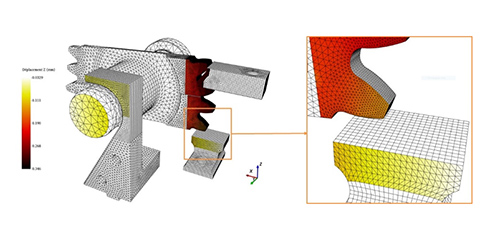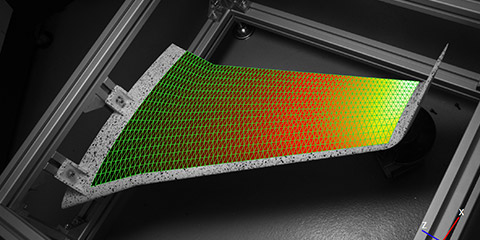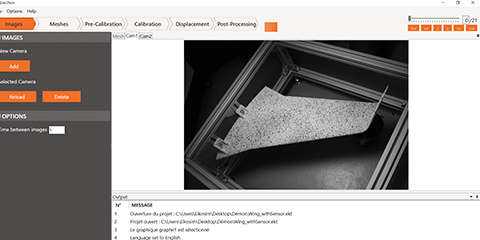EikoTwin DIC by EikoSim
A Bridge Between Simulation and Test
EikoTwin DIC allows image processing (digital image correlation) based on the finite element (FE) mesh of your simulation.
DIC is an image processing technique that allows users to measure displacements and strains of a structure during mechanical testing. Compared to strain gages and extensometers, DIC drastically increases the amount of information gathered and the ability for the user to understand the mechanical behavior of their structure. But traditional DIC software produce a measurement of displacement and strains of a cloud of points. Thus, users often have a hard time comparing experimental data with simulation results. EikoTwin DIC is simulation-oriented, which means these displacements and strains are directly measured from the images on the FE mesh. As a result, EikoTwin DIC directly compares these deformations to those predicted by numerical simulations.
Through a single test, EikoTwin DIC users are able to understand immediately how to improve their simulations, thus avoiding trial and error and wasting time.








